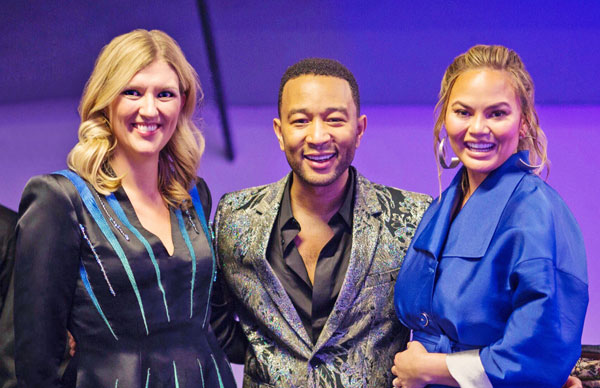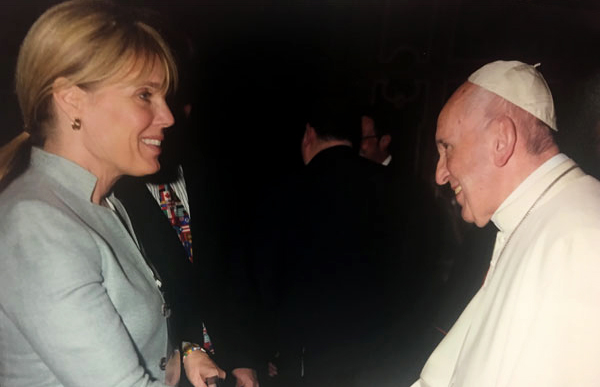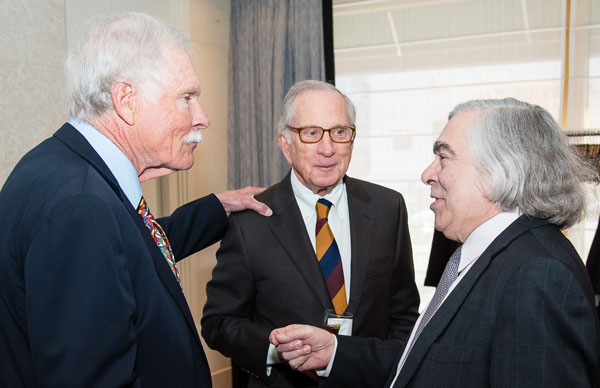I grew up during a time where we practiced “duck and cover” drills in school, anticipating a bomb scare. It’s hard to believe that we are reentering this scary period in human history. Regardless of where you fall politically, it’s pretty clear that the world is uneasy. While North Korea persists in its belligerence, the more traditional diplomacy of the past has given way to mean Tweets. Putin’s Russia and Trump’s administration have reversed decades of non-proliferation policy and have signaled efforts to potentially modernize and expand their nuclear arsenal. Our relationship with China continues to degrade, and the oft-overlooked conflict between Pakistan and India continues to escalate.
How does this affect you? The United States and Russia maintain roughly 1,800 of their nuclear weapons on hair-trigger alert. That means one small accident, one wrong piece of intel and millions of lives could be lost within minutes. If you think it is anything other than moral luck that has gotten us this far without catastrophe, I have a bridge to sell you. We saw firsthand the terror that ensues after Hawaii recently received a false nuclear threat warning. What’s more, a report by the Government Accountability Office revealed that the U.S. nuclear arsenal is maintained on “museum-ready” 1970’s technology with 8-inch floppy disks. This costs us approximately $150 million per day to maintain!

Beatrice Fihn, director of ICAN, the 2017 Nobel Peace Prize Award recipient, at the awards ceremony with event headliner John Legend and his wife Chrissy Teigen. Photo courtesy ICAN.
My father, Ted Turner, is a nuclear weapons abolitionist. He co-founded the Nuclear Threat Initiative (NTI) in 2001 with Sam Nunn, former U.S. Senator and chairman of the U.S. Senate Committee on Armed Services, and a world-renowned defense expert. My dad recognized early on that nuclear weapons are the number one short-term threat to humanity. Along with his friends Warren Buffett (a significant funder of NTI’s work) and President Jimmy Carter (SALT Treaties), he has been involved in ridding the world of this threat for many years.
Let’s look at the facts. According to the 2017 Nobel Peace Prize winning organization, the International Campaign to Abolish Nuclear Weapons (ICAN), there are nine countries in possession of these weapons – the United States, Russia, United Kingdom, France, China, India, Pakistan, Israel and North Korea. Together these countries are believed to have approximately 15,000 nuclear weapons, with Russia and the U.S. possessing over 90% of them. In addition to these countries, Belgium, Germany, Italy, the Netherlands and Turkey host nuclear weapons as part of a NATO nuclear-sharing arrangement.
Despite World War II and the Cold War long behind us, as well as many attempts at nuclear threat reduction, the world is in ever greater danger from these catastrophic weapons. Nuclear weapons have only been used in warfare twice, when the U.S. dropped them on the Japanese cities of Hiroshima and Nagasaki in August 1945. The immediate loss of life was tremendous, with thousands more casualties resulting from injury or the effects from radiation exposure for many decades following.

Pope Francis receives Ted Turner’s letter from daughter Laura Turner Seydel at the Vatican’s Nuclear Disarmament Symposium.
I have been to the Hiroshima Peace Memorial and it is truly difficult to put the horror into words. I highly recommend spending a little time familiarizing yourself with the aftermath of these bombings. There are many resources online and sometimes we have to come face-to-face with an issue before we truly understand its evil.
Nuclear weapons are unique in their ability for destruction of human life and the environment. They produce vast amounts of energy in the form of blast, heat and radiation. According to the International Committee of the Red Cross, there is no available or effective way of providing humanitarian assistance to victims of a nuclear blast. Truly terrifying is the reality that today’s modern nuclear bombs are significantly more powerful, the largest of those roughly 3,000 times more powerful than those dropped on Hiroshima and Nagasaki. But even removing those from the equation, a regional nuclear war involving around 100 Hiroshima-sized weapons, say between India and Pakistan, according to ICAN, “would disrupt the global climate and agricultural production so severely that more than a billion people would be at risk of famine.”
According to Ira Helfand, MD, co-president of the International Physicians for the Prevention of Nuclear War (IPPNW), recipient of the 1985 Nobel Peace Prize, and co-founder and past president of Physicians for Social Responsibility (PSR), “The use of just 300 of the 7,000 warheads in the Russian arsenal against urban targets in the United States would kill more than 75 million people in the first half hour, and destroy the entire economic infrastructure on which the rest of the population relies to sustain themselves.” According to a 2007 study in the Journal of Geophysical Research (available for free download from Rutgers University), nuclear conflict between Russia and the U.S. could cause a nuclear winter, dropping temperatures to a new ice age, resulting in the starvation of the majority of the world’s people and possible human extinction. Jonathan Granoff, president of the Global Security Institute, sums it up nicely, “Nuclear weapons have forced us to consider whether we will be the last generation.”

Co-chairmen/co-founders of the Nuclear Threat Initiative Ted Turner and Sam Nunn, with co-chairman/CEO Ernest Moniz. Photo courtesy Nuclear Threat Initiative.
The popular argument against elimination is deterrence. But how can deterrence amount to what is now a modern arms race? And what about the moral implications? In November 2017, the Pope hosted a high-level symposium against nuclear weapons which I had the privilege of attending. While there I had the great honor of presenting the Pope with my father’s letter entreating him to issue an encyclical on banning nuclear weapons. Pope Francis strongly condemned weapons of mass destruction, calling for their complete elimination. He pointed out the possession of nuclear weapons is immoral even as a deterrent because by having them you can envision having to use them, thereby murdering millions of innocent people. He did find hope however in the recent UN vote on the Treaty on the Prohibition of Nuclear Weapons passed with 122 votes in favor on July 7, 2017. Unfortunately, no nuclear weapons state nor NATO members, except for the Netherlands, took part in the vote.
This treaty was in part the result of the hard work of ICAN and its partners. On December 11, John Legend headlined the Nobel Peace Prize ceremony where ICAN was awarded the prize “for its work to draw attention to the catastrophic humanitarian consequences of any use of nuclear weapons and for its groundbreaking efforts to achieve a treaty-based prohibition on such weapons.” The Nobel Committee believes ICAN’s advocacy and accomplishments can create the momentum whereby the world reduces proliferation, and nuclear states agree to elimination. Jointly accepting the award on behalf of the organization was ICAN Executive Director Beatrice Fihn and Setsuko Thurlow, one of the hibakusha, the specific term given by the Japanese to the survivors of the bombing, literally meaning “explosion-affected” people. I cannot stress how necessary it is to fight for the worldwide ban of these weapons, because as Beatrice said in her acceptance speech, “We have a choice: the end of nuclear weapons or the end of us.”